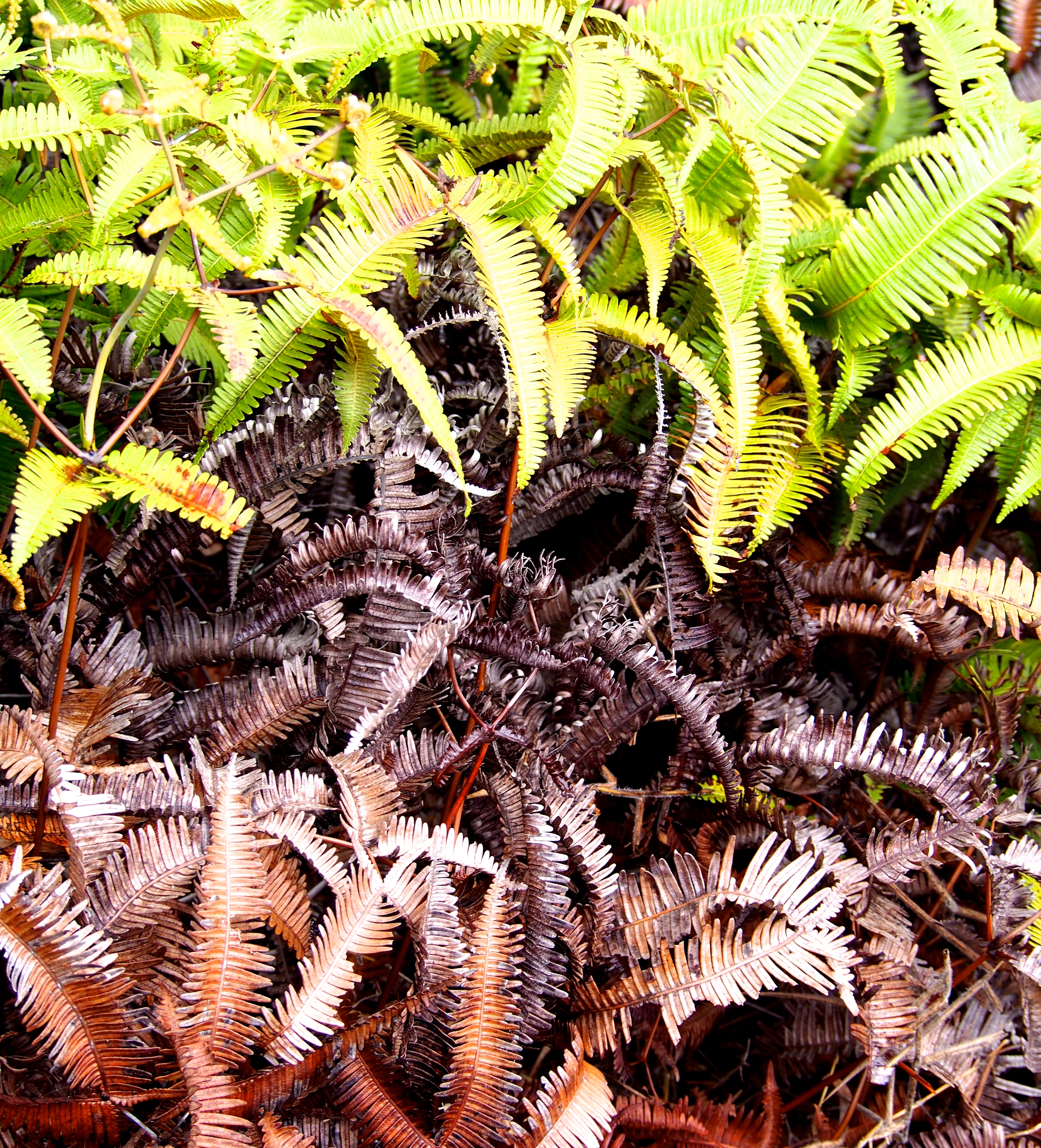The mention of ferns usually conjures images of uncoiling fiddleheads and expansive fronds in a lush rainforest. They seem almost other-worldly by their association with dinosaurs and absence in our daily commutes.

Hapu-u fern (Cibotium menziesii) in Hawaii Tropical Botanical Garden 
Fern 
Fern
Ferns are actually more city-friendly than I thought. I remember spotting a generic-looking garden fern sprouting from a small crack between a concrete pavement and bitumen road at the height of summer in Tokyo. I also found that ferns can look nothing like a “fern”. A Japanese holly fern in Takao Mountain looked just like a deciduous shrub, if not for the sori (clusters of sporangia, which contain spores) that gave them away.

The most curious sighting was in Sydney, Australia. James and I walked past a pond in a park we often frequented and saw these Australasian swamphens (Porphyrio melanotus) on a piece of driftwood. The poor swamphens looked like they were clinging on for dear life. I would have thought the brown stuff was toxic, but a nearby Eurasian coot (Fulica atra) had already adapted to the new environment and cruised along in the water just fine.

Help! Australasian swamphens (Porphyrio melanotus) clinging onto a piece of driftwood for dear life 
In her element – Eurasian coot (Fulica atra) cruising along just fine
It turns out the swamphens were over-cautious as they were in fact surrounded by nutritious food. The surface of the pond had been colonised by a sea of Azolla, an aquatic, free-floating fern native to Australia, commonly known as duckweed. They are found in stationary and slow-moving waters across the country. Azolla are typically green and rely on photosynthesis for energy but the chlorophyll in their pinnata (small leaves) can degrade and turn reddish-brown when exposed to intense sunlight. Perhaps the most remarkable aspect of their biology is the nitrogen-fixing cyanobacteria (Nostoc azolla) that live in a cavity in the pinnata. The two organisms have a symbiotic relationship and have been in partnership for more than 50 million years. The plant provides the bacteria a place to live in exchange for nitrogen that is crucial to the plant’s survival. Just under the pinnata lies their light and feathery root system that absorbs other nutrients from the water.
I was most intrigued by their “floating” behaviour as I had been reading about calcium carbonate mineral sheets, called calcite rafts, that “float” on the surface of quiescent limestone cave pools. Like calcite rafts, Azolla are held at the surface of waterbodies by surface tension. Azolla have an extremely high reproductive rate and can double their biomass every two to three days to form an Azolla mat that is 30 cm thick if there is sufficient phosphorus. Azolla blooms cover the entire water surface and can alter the ecosystem significantly, adversely affect the survival of other plants and animals. Common treatments to remove Azolla include chemicals that reduce the surface tension of water or surface agitation. The Azolla bloom we saw in the city park was most likely unwanted – we returned to the pond a few days later and there was no trace of the fern.

Azolla free-floating fern at the surface of a pond 
Azolla up-close
However, Azolla are not always considered a weed. Azolla are often used in agriculture owing to their rapid growth and nitrogen-fixing capabilities. Nitrogen is the key limiting factor in rice production so Azolla are grown alongside rice in paddies. The biomass can also be ploughed under into the soil for use as a fertiliser for subsequent crops.
Azolla have also been recognised for their ability to sequester carbon dioxide. Most notably, they have been hypothesised to sequester substantial amounts of carbon dioxide at the poles during the middle Eocene epoch such that they transformed a “greenhouse Earth” with no continental glaciers to an “Icehouse Earth” where there are at least two continental ice sheets (Arctic and Antarctic). Perhaps this power plant could be utilised to lessen our climate woes?